The development trend of the automotive cockpit system, in addition to display, includes an important direction of the development of the in-car monitoring system. This aspect is multi-faceted, and I will write a few things to sort out the ideas preliminarily.
From the driver monitoring system (DMS) to the occupancy monitoring system (OMS), and then to the detection of the overall environment inside the car, the overall driving factors are mainly based on two major aspects, with safety being the most important. Globally, every year, hundreds of children are left in the car by parents, resulting in personal safety problems. In summer, if a child is accidentally forgotten in a car, the temperature inside the enclosed space can reach 60℃ in a short time, which can easily cause irreparable tragedies.
● Regulatory factors:
In response to this, Euro NCAP announced that it will start scoring child presence detection from 2022, which can detect if a child is left alone in the car and issue an alarm to the car owner or emergency services to avoid heat-related deaths.
● Consumer demand:
In this regard, Tesla has introduced the Cabin Overheat Protect feature, focusing on the safety of children (and pets). When the car is turned off, it can maintain a safe temperature for several hours. In addition to maintaining a suitable temperature inside the car, the central control display screen also displays the current temperature inside the car, letting passers-by know that they do not need to worry about the environment in which children (and pets) are located in the car.
Therefore, whether it is regulatory compliance or consumer-oriented, this field will be a necessary function in the future.
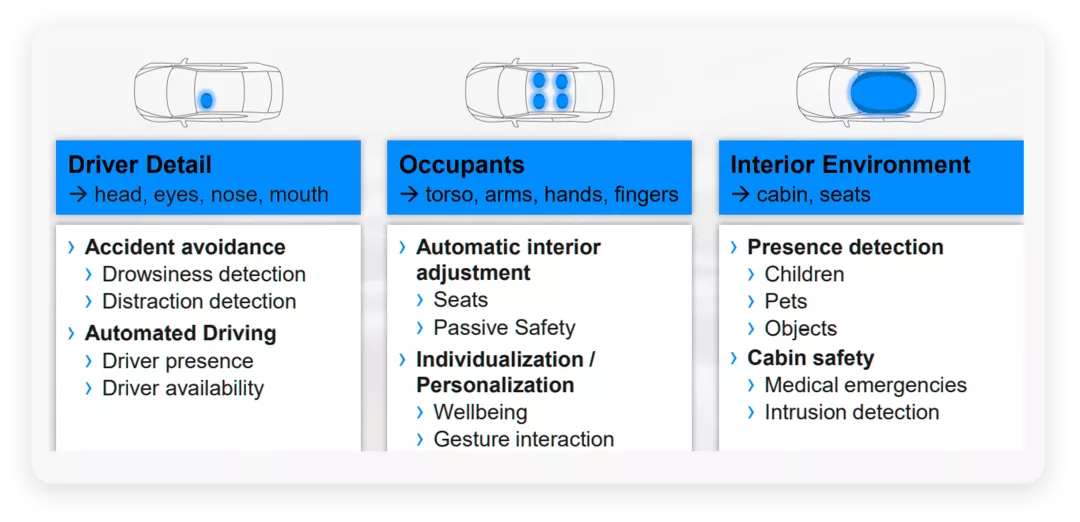
Regulations and Technology
As mentioned earlier, Euro NCAP will promote the occupancy monitoring system (OMS). In order for new cars sold in Europe to receive a five-star rating starting in 2022, the deployment of OMS functionality needs to begin now. Taking a step further, the Occupant Sensing Systems (OSS) are developed worldwide, mainly for detecting whether there are people sitting in the backseat based on the original door and seat sensors, and adding visual (camera) or radar sensors.
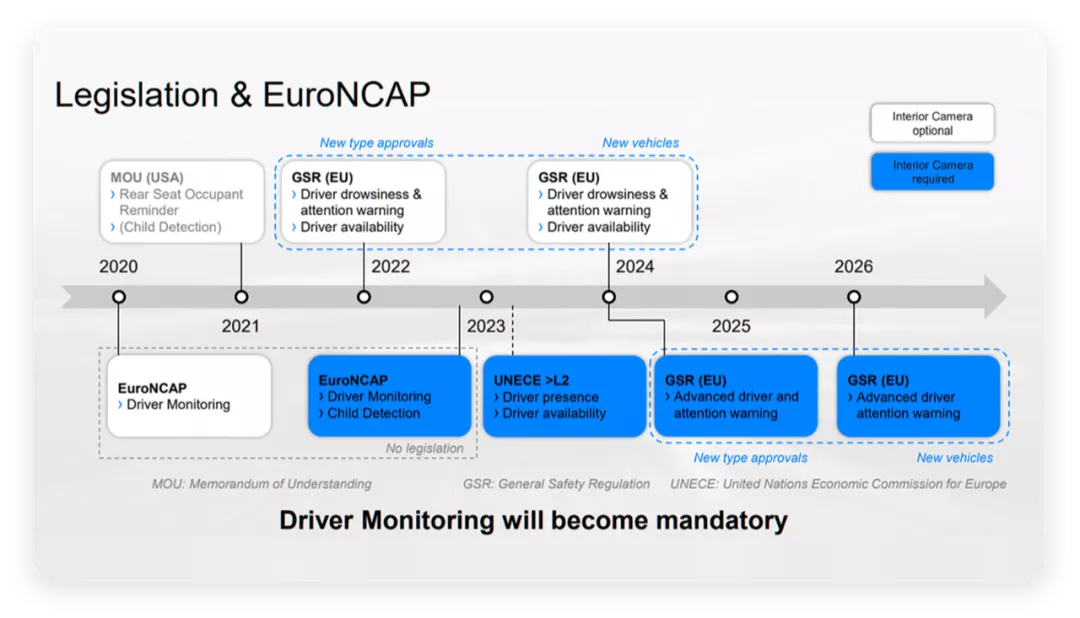

There are many solutions to solve the problem of in-car biometric recognition. The earliest and simplest one is based on physical information, that is, based on seat sensors, similar to the seat belt alarm system. Then it expanded to the driver monitoring camera based on the cockpit, which extends from driver monitoring to the entire cockpit monitoring, and eventually becomes a complete cockpit monitoring camera. Of course, millimeter wave radar can also be added, or an infrared LED proximity detection solution can be applied here.
●Camera:
The advantage is that the cockpit’s powerful chip can systematically detect the situation in the car.
●Millimeter wave radar:
Installed on the roof of the car, it can sense all areas of the cockpit, detect targets, and monitor biological features with high precision. The radar provides depth perception and can see through soft materials such as blankets covering children and similar obstructions.
●IRLED:
This is also a relatively simple and brutal method, but more expensive.
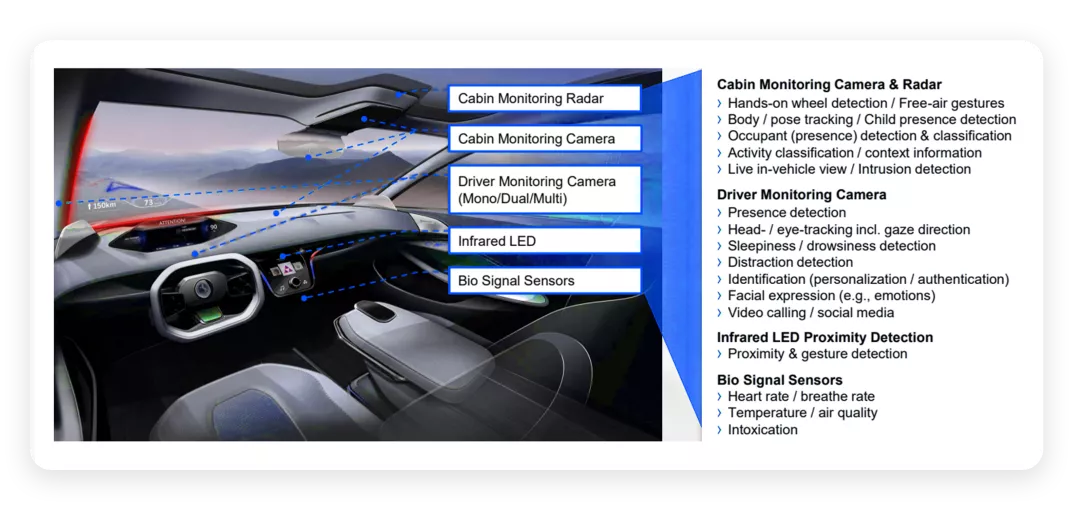
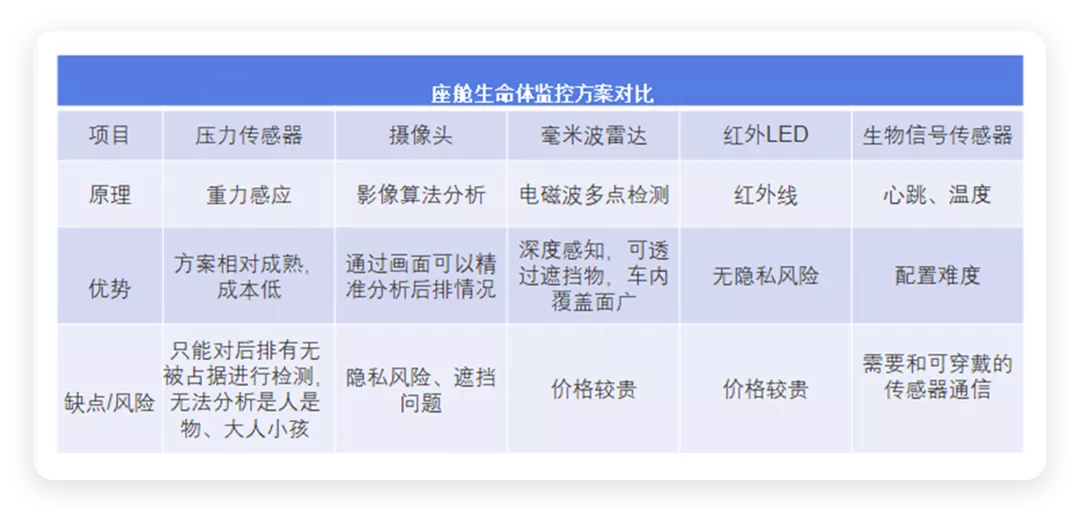
Product Combination
It is precisely because of the complex product combination that there may be the greatest demand for cockpit video input in this area. The original cockpit board was designed around video output. After introducing various functions, powerful GPU is also needed for monitoring.
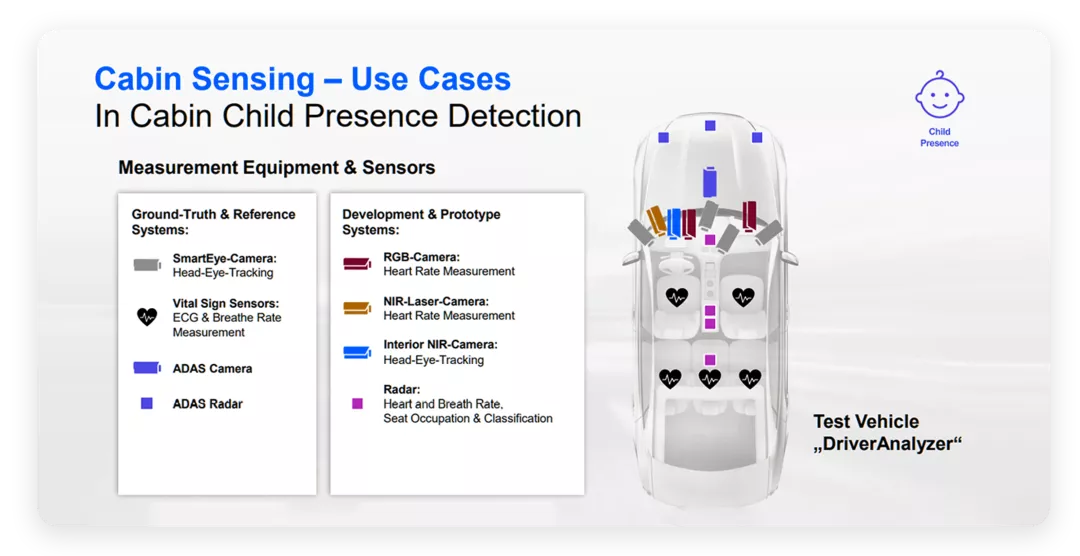
China has come up with many interesting concept designs:
○Integrated altogether, with IR LED and camera integrated, I understood that the 2 Box solution only needs to be sent to the cockpit domain controller in the future, and the 4 Box solution seems to be even more unnecessary.
○Integrated on the instrument panel or display, this is also a way of integrating optical components.
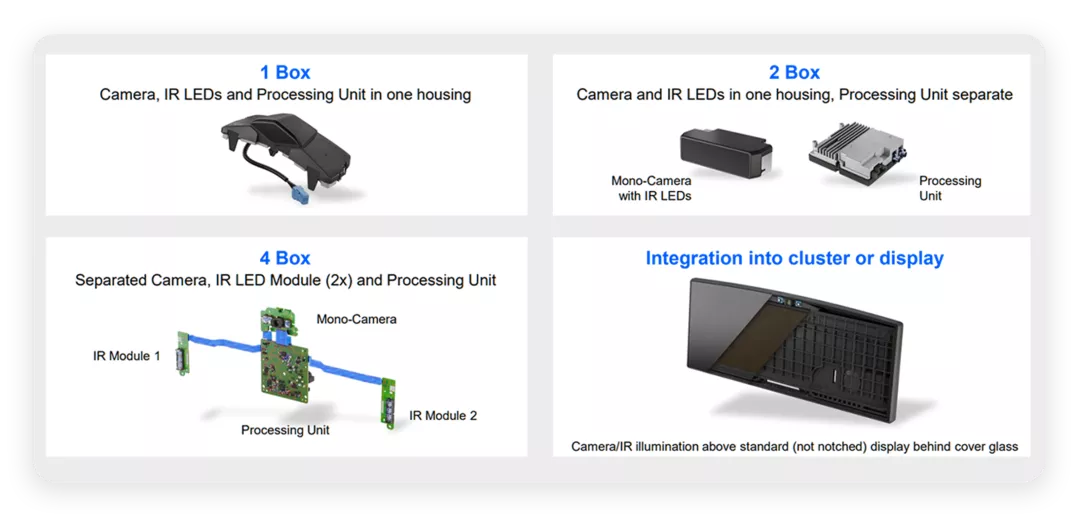 ## Summary:
## Summary:
From the perspective of both interior and exterior of the car, we find that with the perception and computation technology, the vehicle can be made more intelligent – it can know more and enable us to do more work. The popularity of in-car monitoring is likely to be faster than we imagine.
This article is a translation by ChatGPT of a Chinese report from 42HOW. If you have any questions about it, please email bd@42how.com.